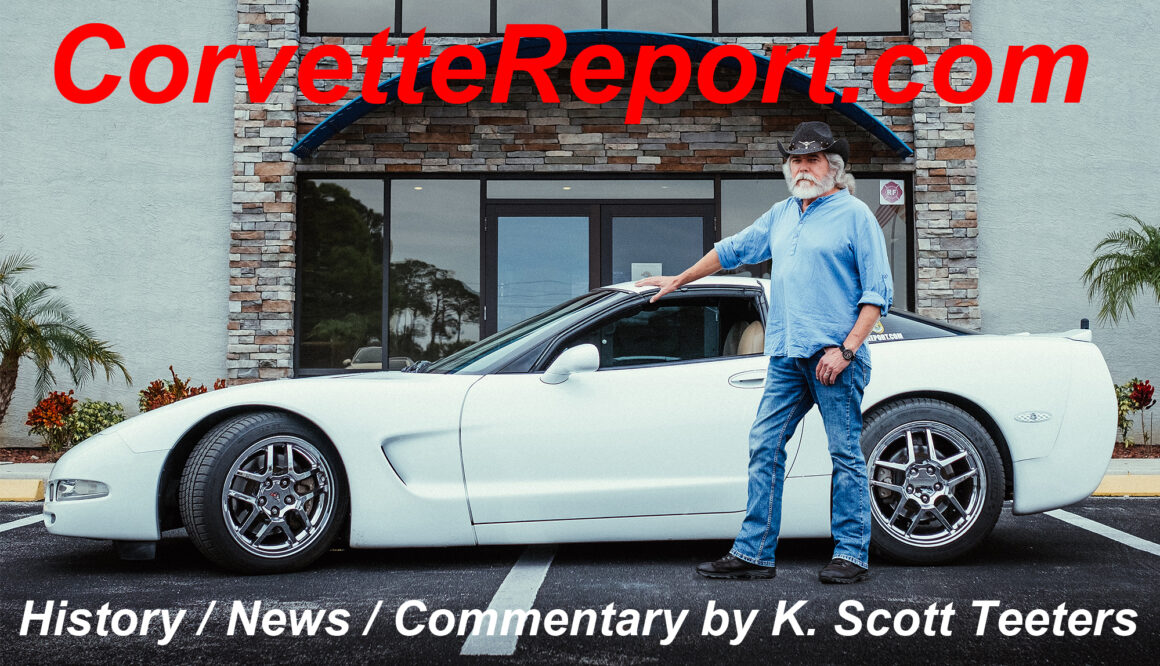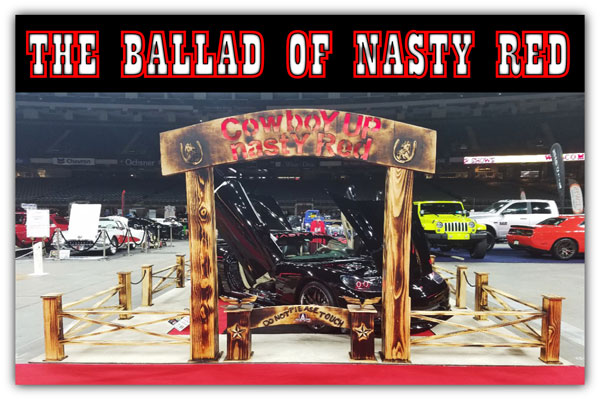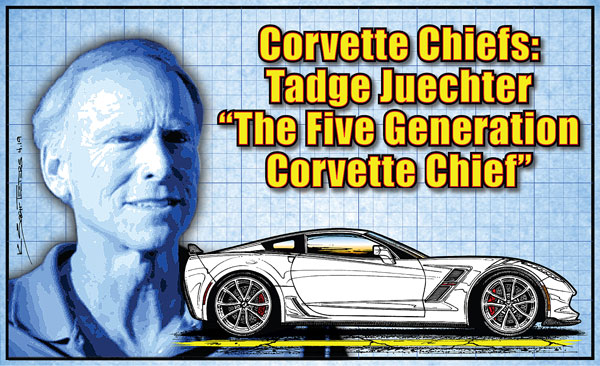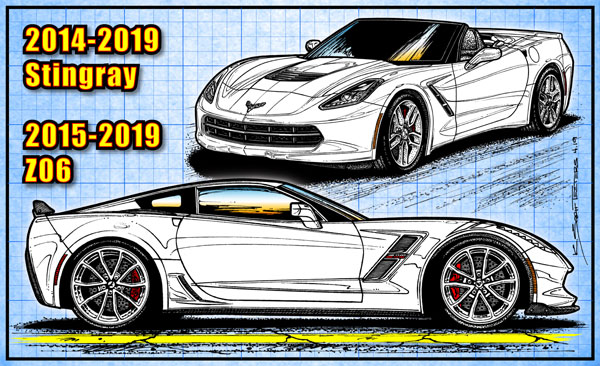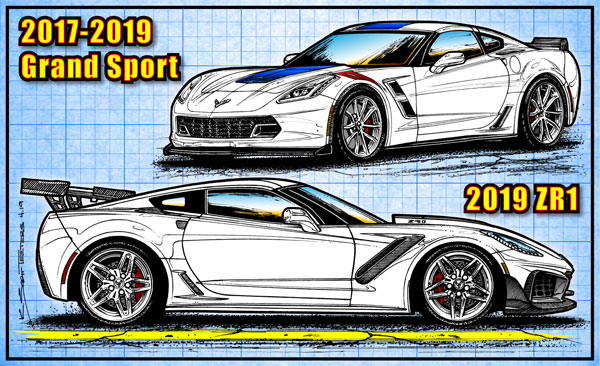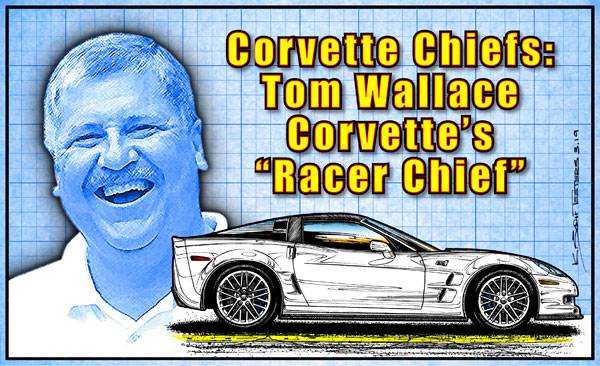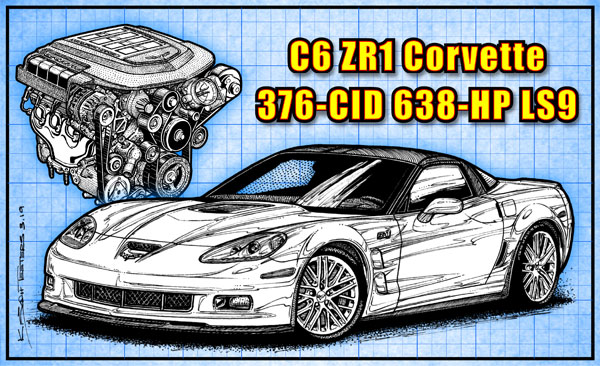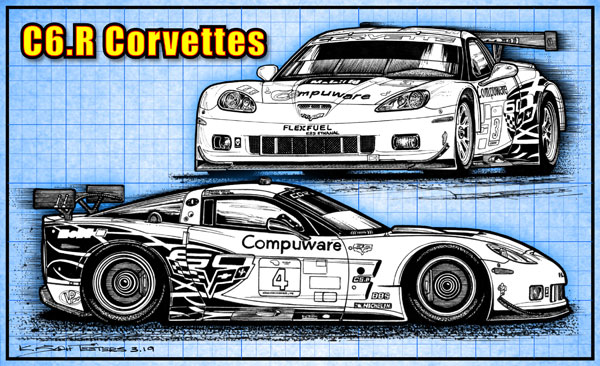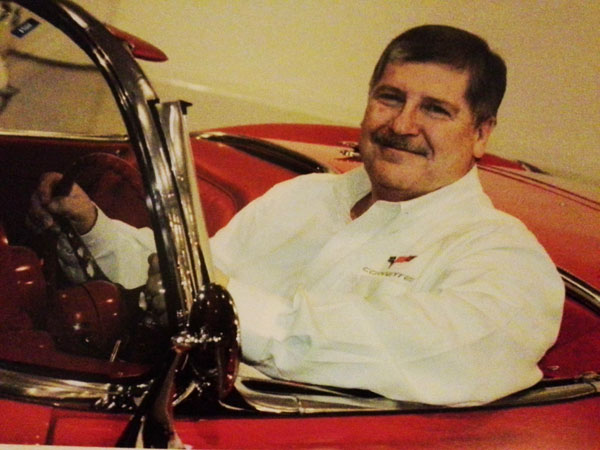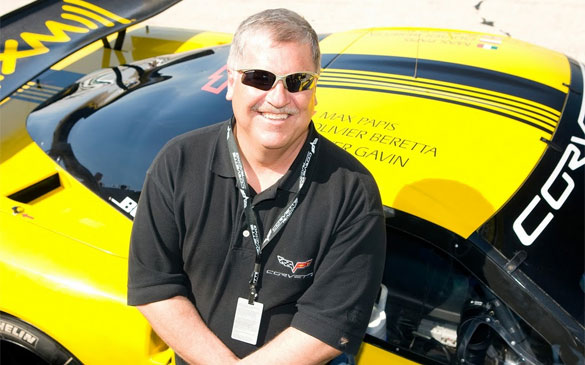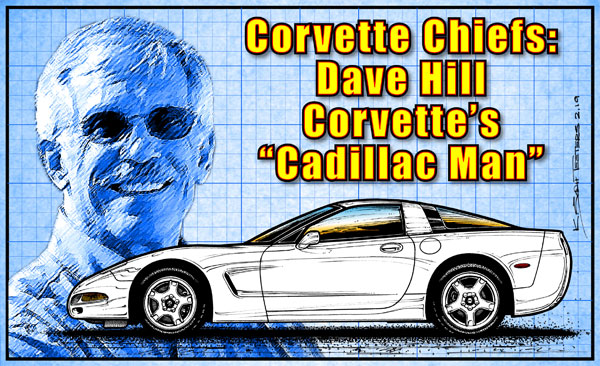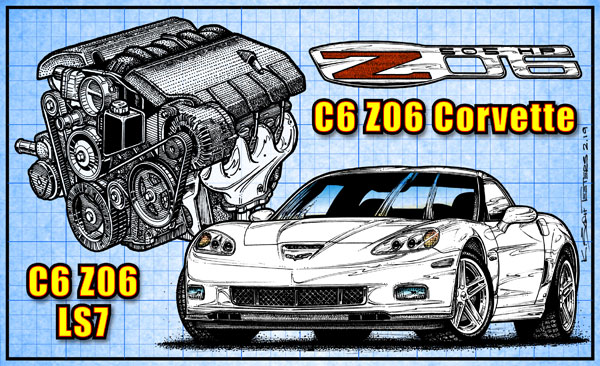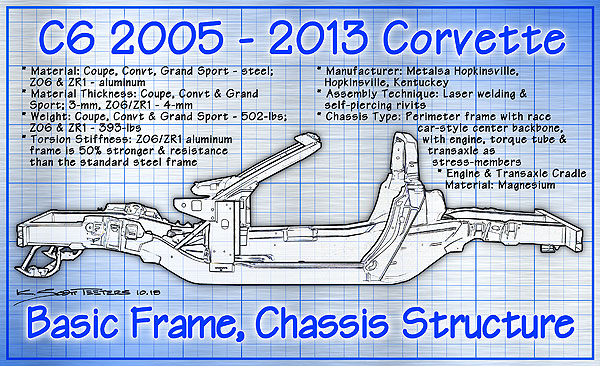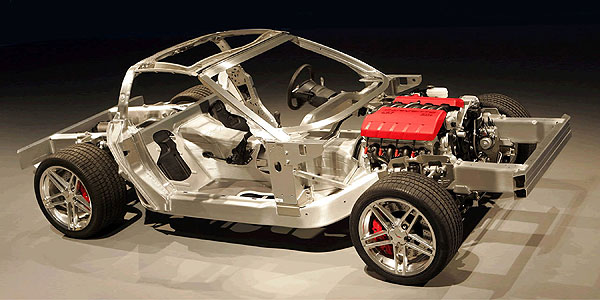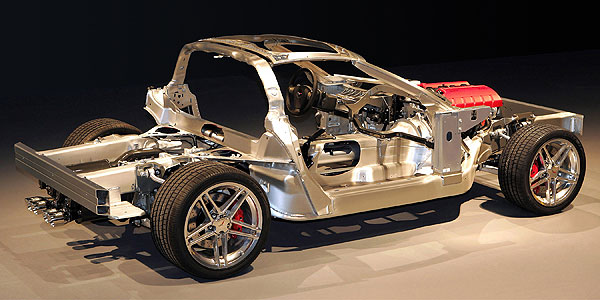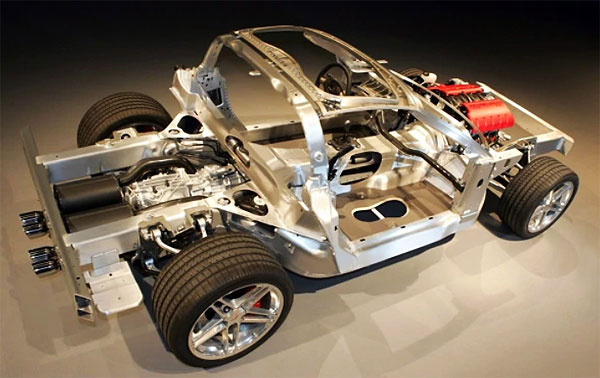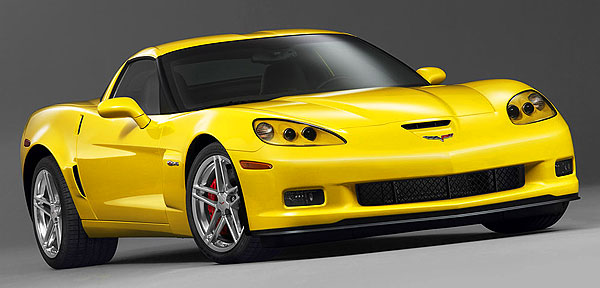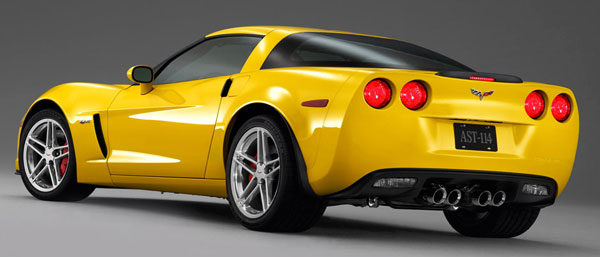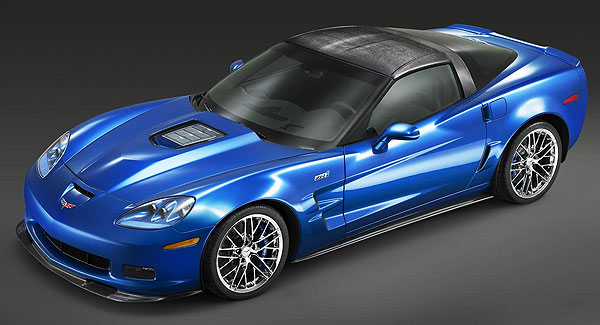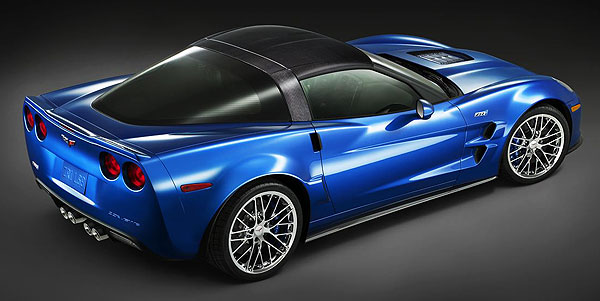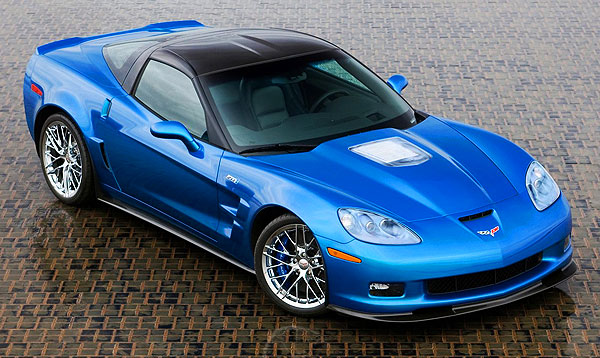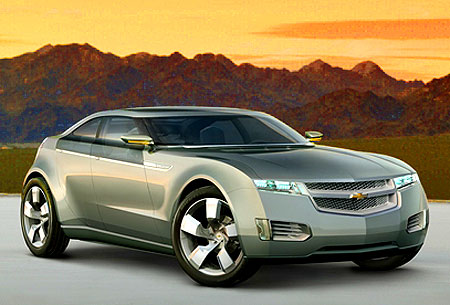Roger “Red” Eldor and Paula “Trigger” Lawson-Eldor blend their passion for horses with their passion for Corvettes!
Dateline: 2-8-22 Written by K. Scott Teeters, Photos by Roger “Red” Eldor & Paula “Trigger” Lawson-Eldor. This story first appeared in the December 2020 issue of Vette Vues Magazine – Our teen years are arguably the most impressionable years of our lives. Roger “Red” Eldor of Spring, Texas had two powerful interests as a kid; horses and Corvettes. Horses came first, as Red grew up with pigs, cows, and horses; and his family grew their own vegetables. Over the years Red has owned four horses and even started a riding club called, “Cadillac Cowboys and Cowgirls”.
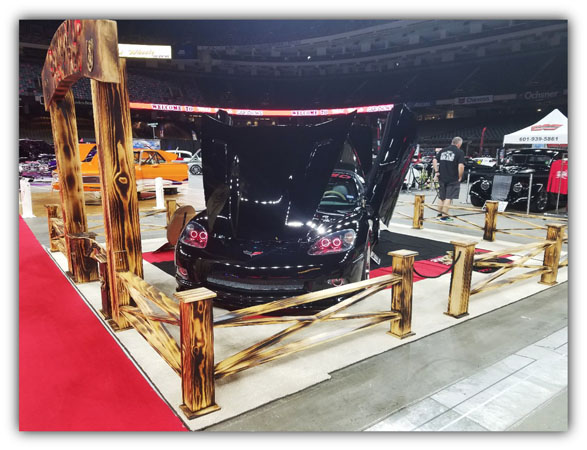
Next came Corvettes. Red was just twelve-years-old when his next-door neighbor brought a brand new 1977 Corvette. It was just the coolest thing he’d ever seen. You could say that was the day when the shark bit him.
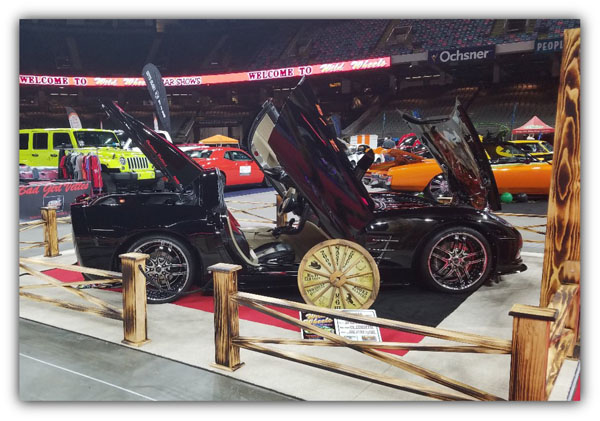
All young men have to find a career, so in his early 20’s Red started driving trucks. By 1989, he got his Commercial Driver’s License and has been driving big rigs ever since. In 2016, 2 years after meeting his wife, Red and Trigger started their transport business; BGV Transport, LLC., specializing in the enclosed transportation of high-end vehicles; mostly working in Texas, Louisiana, and Oklahoma.
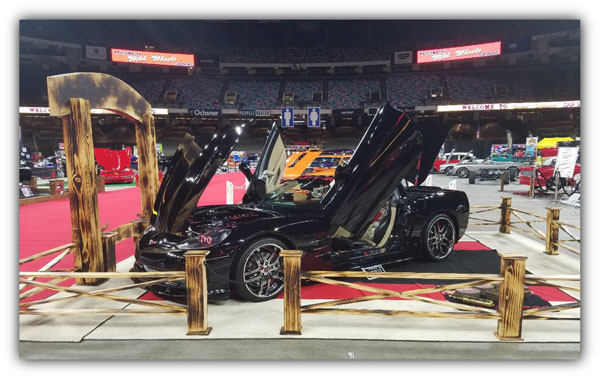
When you spend time as an over-the-road trucker, you can have long periods of time to “think”; and in Red’s case, that meant envisioning the day when he would get his first Corvette. One day in 2009, Red saddled up and rode to Sugarland Chevrolet, in Sugarland, Texas, and left in a new Corvette; Black, Ebony/Cashmere interior, 430-horsepower, six-speed, and the 2LT Equipment Group.
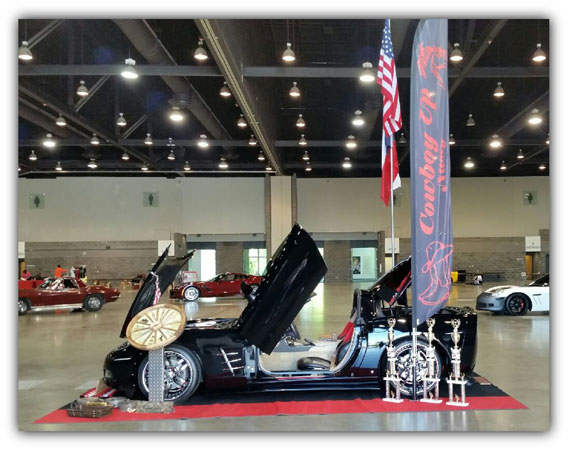
In an interview, former Corvette chief engineer Dave Hill explained that Corvette designers are there because they want to be there to be a part of something that is beyond just transportation. Hill said, “… these cars change people’s social lives…” I think we can all agree on that.
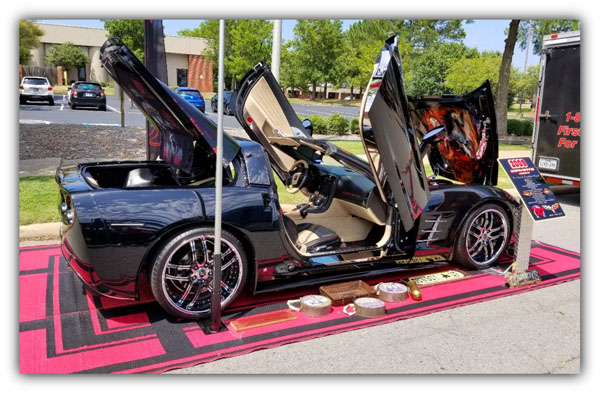
Red started attending car shows and began to study the various cars that won trophies to see how they did it. If you go to car shows and just “look at the cars”, it may not be obvious what it takes to present your unique Corvette.
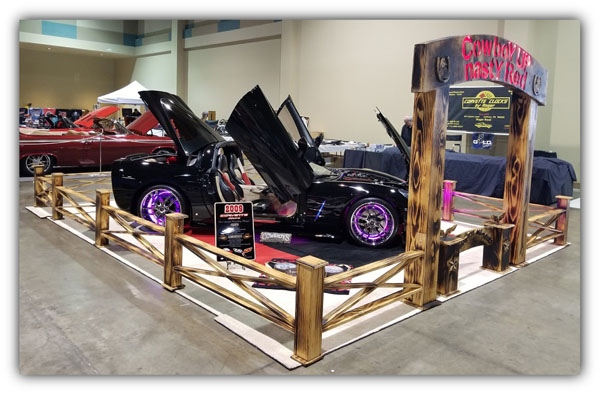
Enthusiasts have been personalizing their Corvettes since around 1954-1955 as aftermarket businesses started offering custom parts for Chevy’s new sporty car. These were the early days of the “Custom Cars” era when the post-war economy was burgeoning and young men (mostly) had extra cash to spend on their cars to personalize and customize. Corvettes have been the subject of some of the wildest custom cars ever built.
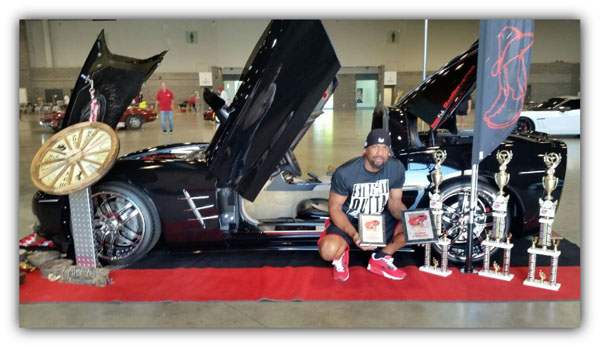
By 2012 Red started his project car where many of us do; performance wheels and bigger tires. Red got a set of Savini Forged Wheels, “Signature Series”, 19”x8.5” on the front and 20”x10” on the rear; shod with Hankook Low Pro tires; 245/35 ZR19 on the front; and 305/25 ZR20 on the rear. The low-profile wheels made the car look lowered, especially after Red installed the Ecklers ZR1-style front splitter and ZR1-style ZR1 side skirts.
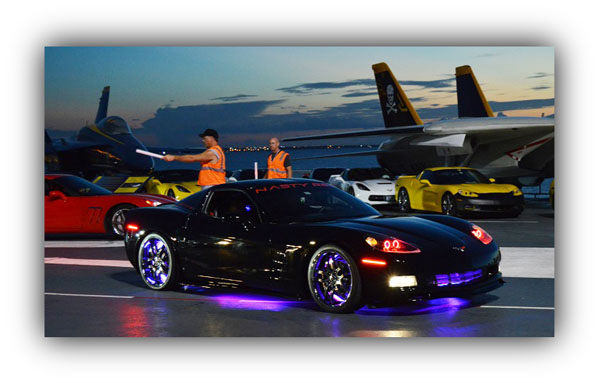
Custom cars typically have custom interiors. This was around the time Red decided to just go for it and make his personalized Corvette a show car that was also still drivable. Few modifications on show cars makes a bigger splash than a set of Lambo-type door hinges. Red went with a set of hinges by Vertical Doors, Inc, and installed by Josh Williams of Aggressive Dream Cars. The high-rise custom hood by Duraflax was painted and installed by Josh. Aside from the hood, all of the paint is factory and has been color-corrected and ceramic coated by Mario Cuppepper of Zenith Auto Works, in Houston, Texas.
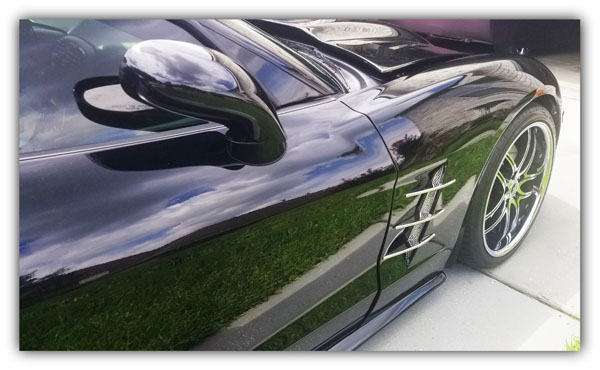
LED lights with special colors are made for custom car projects. Red upgraded his car with LED lights by Oracle. The under-the-car and behind-the-wheels LED lighting kits are also from Oracle. Josh Williams did all of the LED work. All of the exterior under-the-car LED lights are hidden and tucked away so that the only things you see is the glow.
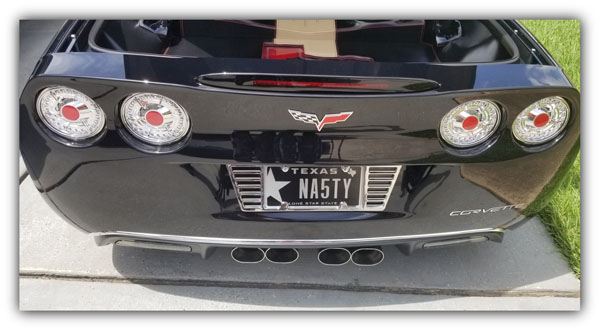
The rear taillight bezels are billet chrome from West Coast Corvettes. Bill Mitchell, the Father of the Sting Ray loved flourishes he called, “elements of discovery”. The chrome “elements of discovery” on Red’s Corvette all came from RPI Designs, Corvette Central, West Coast Corvettes, American Car Craft, and Ecklers. Note Red’s custom license plate, “NA5TY”.
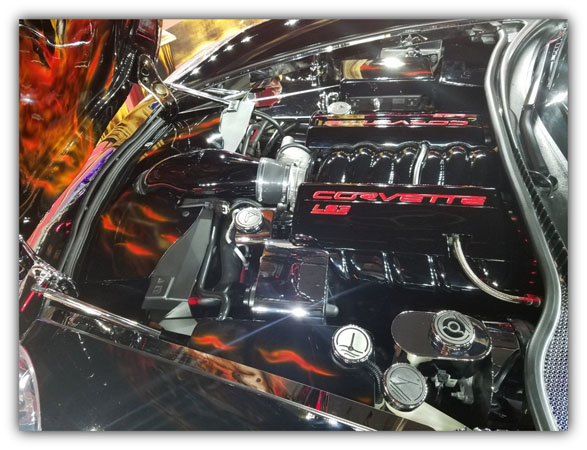
Custom cars typically have some extra grunt to go along with the extra blink inside the engine compartment. Red’s 430-horsepower LS3 engine received a set of Kooks Long-Tube Headers’ and B&B Billy Boat cat-backs and exhaust tips installed by PowerFab, in Spring, Texas. Red is very happy with the car’s performance, and after all, it’s a show car.
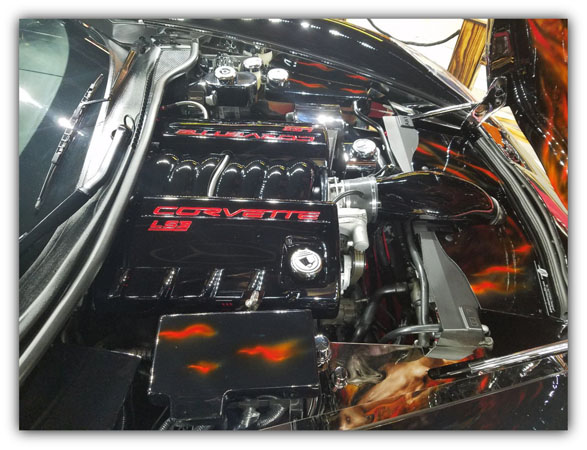
While we are talking about what’s under the hood, we must call out the airbrush art throughout the car. The design for all of the art on the car came from Paula “Trigger” Lawson-Eldor. Trigger worked with airbrush artist Robert Clarke of Clarkes Custom Airbrushing, in Houston, Texas to create Red’s homage to his first passion, horses. Although Red is an over-the-road trucker, he’s a cowboy at heart; cowboy boots, hats, the whole setup.
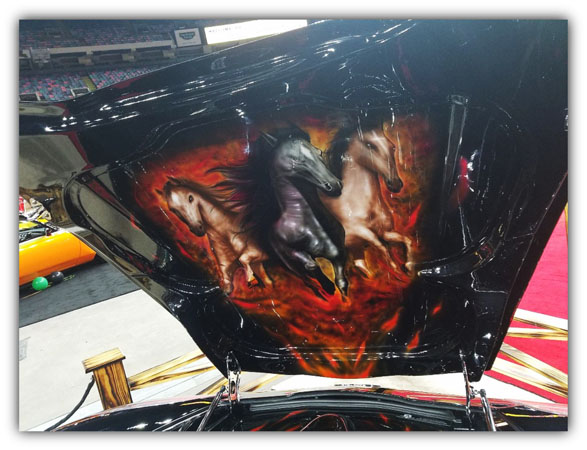
The three horses under the hood are jumping through fire; perhaps the fire coming from the LS3. A cover forward of the radiator, as well as several covers, are painted black with airbrushed flames. The fuel rail covers were painted black with red inscribed “Corvette LS3” lettering. Chrome filler caps, hood hinges, and struts finish off the engine compartment.
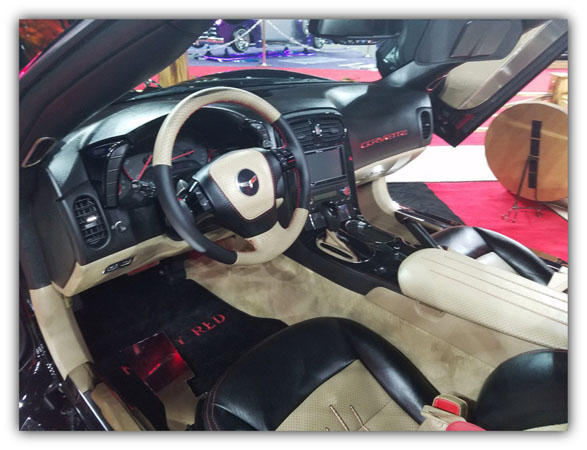
Red’s interior looks like what Chevrolet could have done. The Cashmere interior already looked great, but Red took things to the next level. The beginning design for the custom upholstery work was created by Manny Garcia III. Manny redesigned the seat inserts, armrests, and door covers with long embroidered stitching in three lines. Several years later, 5 Star Upholstery from League City, Texas duplicated that design on leather to wrap and custom-stitch the sun visors, gas and brake pedal booties, shifter, and the hatch strut covers. The custom upholstery work also extends back into the trunk, which was the most challenging part of Red’s “Nasty Red” custom Corvette. Black floor mats with “Nasty Red” embroidery are a nice contrast with the Cashmere interior. The rear cargo shade art was also airbrushed to match the car theme of “Cowboy Up”.
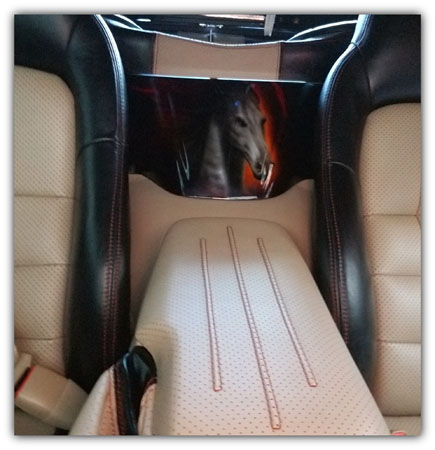
Red said that the sound system was the hardest part of building Nasty Red. The design was Josh Williams’s idea, the sound system was built by Josh Williams of Aggressive Dream Cars in League City, Texas, and the woodwork was done by “Derek”. The housing box is all wood with a Texas-shaped plexi cover etched by Josh with a matching horse head. The system uses two Fosgate 10-inch woofers, and a Rockford amp with a Shuriken 600w show trunk battery. The upholstery on the box, the cream-colored center inset, and the storage lids were done by 5 Star Upholstery.
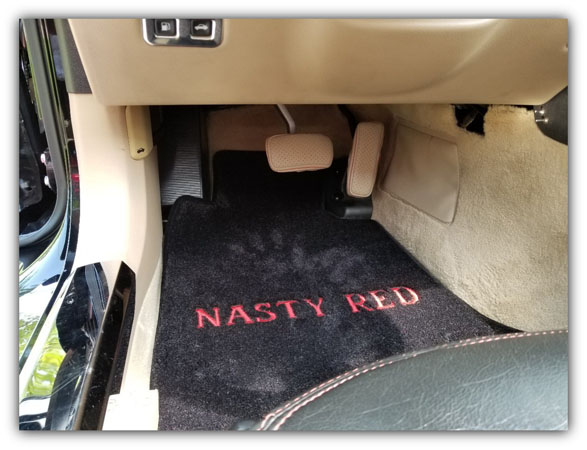
When it comes to making a big impression at car shows, staging is everything. By this time in the “Nasty Red” project, Trigger (aka, Paula) had taken on the role of art and design director. Since Nasty Red is liberally decorated with horses and fire, plus the 450-or-so horses inside the LS3 engine, all those “horses” needed to be in a coral! Trigger worked out the details of her vision and Derek at Aggressive Dream Cars built the coral. Everything is real wood, custom-burned, and finished by Derek.

Car Shows are all about having fun. An awesome customized car with fun staging and lights can make a lasting impression. Who knows, twenty years from now some young person might say, “When I was a kid, I saw a beautiful black custom Corvette decorated with horses and sitting in a coral. And that’s how I got into cars.”
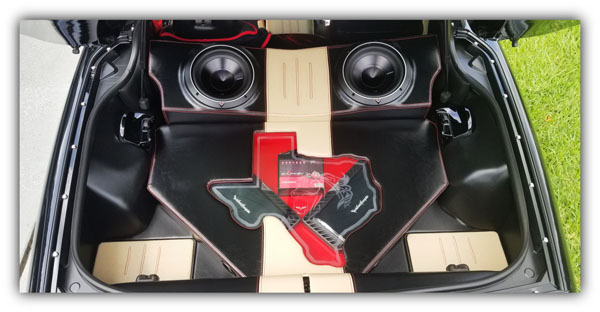
While Nasty Red is a “show car”, it’s also a driver’s car. Red and Trigger have taken Nasty Red to shows from Ohio to Arkansas, Louisiana, Tennessee, Oklahoma, and of course, Texas. For small local shows, they just drive Nasty Red to the show. For bigger shows when they can set up their coral, they use an enclosed trailer. At the World of Wheels Show in Louisiana, Red won the Best Display Award. At a car show at the National Corvette Museum in 2017, Nasty Red won 2nd Place in Custom Class and a Celebrity Choice. To date, Nasty Red has won Best in Show four times.
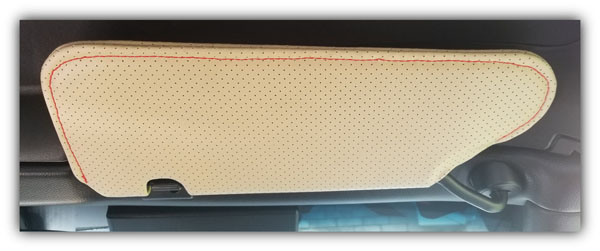
Red has declared Nasty Red “completed”. Trigger has a 2001 coupe, so maybe they are already dreaming up something for her ride. Trigger and Red started a Corvette apparel online store offering shirts, tops, and gear for Corvette people under the brand name “Bad Girl Vettes LLC”.
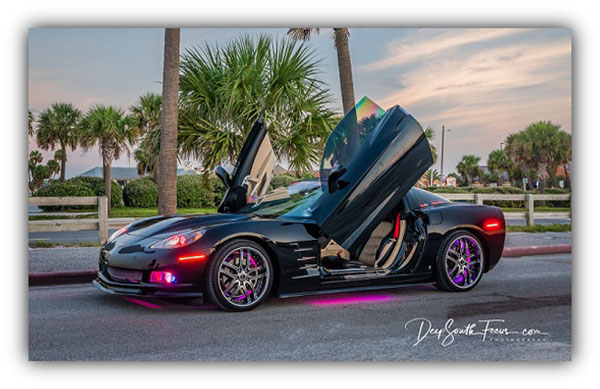
Red and Trigger also have a special Corvette mentor, former Bowling Green Plant Manager, Wil Cooksey, and his wife, Liz. They are now part of “The Cooksey Crew” and attend car shows, such as Corvettes at Carlisle and other shows. Dave Hill was so on the money when he said that Corvettes change people’s lifestyles. Red and Trigger, along with Wil and Liz Cooksey, and others are having the time of their lives! – Scott
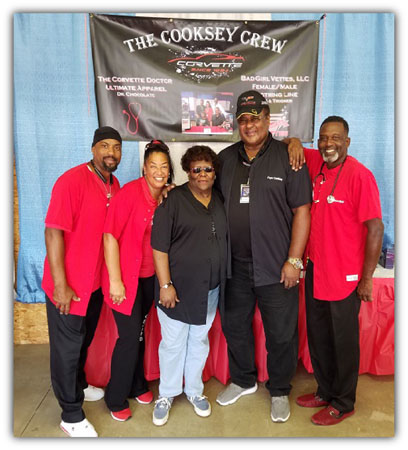
PS – To subscribe to Vette Vues Magazine, CLICK HERE.
Only $25.99 for 12 issues!
